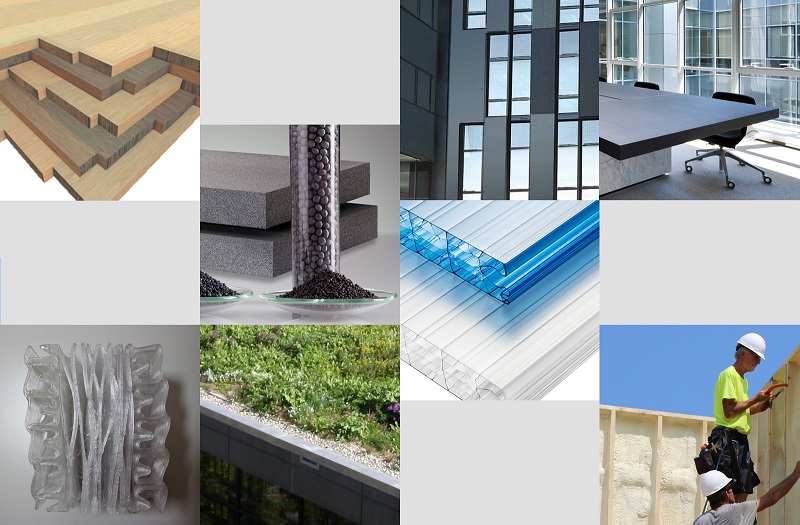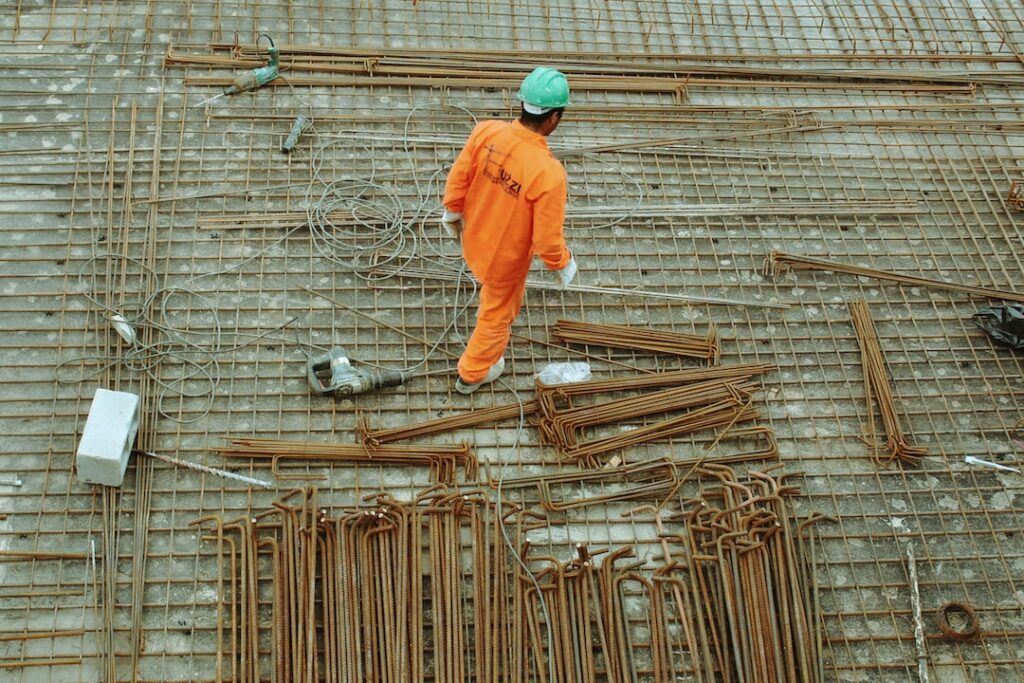It’s no secret that the use of energy-efficient building materials can have a big impact on your business. Not only do they reduce power bills but they also help protect our environment from carbon emissions and waste. But with so many different types of building materials available, it can be difficult to know what building material is most energy efficient.
From insulation and roofing materials to HVAC and lighting systems, there are plenty of things to consider when choosing building materials. If you’re looking for ways to make your next construction project as sustainable as possible, then join us in exploring what building material is most energy efficient for your facility.
Table of Contents
What Building Material is Most Energy Efficient?
Let’s start with building insulation.
Insulation is a material that helps to reduce the transfer of heat from one area to another. There are several types of insulation available including fiberglass, cellulose, foam board, and spray foam.
Fiberglass insulation is made from glass fibers and can be used in walls, attics, floors, and ceilings.
Cellulose insulation is made from recycled paper products and can also be used in walls or attic spaces.
Foam board insulation is made of rigid sheets of plastic foam that provide an air barrier between two surfaces while providing thermal resistance.
Spray foam insulation comes in liquid form and expands into a solid when applied to create an airtight seal.
Benefits of Insulation
- Improved energy efficiency.
- Reduced heating and cooling costs.
- Increased comfort level by keeping indoor temperatures more consistent.
- Better soundproofing for noise reduction.
- Improved safety by preventing the spread of fire.
- Reduced condensation build-up which prevents mold growth.
- Reduced carbon emissions due to less energy consumption.
Next, let’s look at how energy-efficient windows and doors can help you achieve greater savings.
Windows and Doors
Windows and doors are an important part of making a building energy efficient.
What building material is most energy efficient for window and door frames?
The most common type of window is the single-pane window, which is made up of one sheet of glass sealed into a frame. This type of window does not provide much insulation from outside temperatures or noise pollution.
Double-pane windows have two sheets of glass separated by air or gas to create an insulating barrier between the inside and outside environment.
Triple-pane windows add another layer for even more insulation against extreme temperatures as well as soundproofing capabilities.
Low E (emissivity) coatings can also be applied to any type of window to reduce heat transfer through the glass while still allowing natural light in during the daytime.
When it comes to doors, your options include steel, wood, fiberglass, vinyl, and aluminum.
Steel doors offer superior strength but may require additional weatherstripping for improved insulation.
Fiberglass provides excellent durability along with great thermal performance but they do tend to cost more.
Vinyl offers good resistance against weather elements at a lower price point.
Aluminum-framed exterior doors provide strong protection from outdoor elements but may need extra insulation since metal conducts heat quickly so cold drafts can enter easily.
Windows and doors are an important part of any building when considering energy efficiency. By selecting the right type, you can enjoy long-term benefits in terms of lower utility bills and improved comfort for your tenants.
Now let’s explore how roofing materials can help with energy efficiency.
Roofing Materials
What building material is most energy efficient for roofs?
There are a variety of roofing materials available for energy-efficient buildings. Some common types include asphalt shingles, metal roofs, clay tiles, slate, and wood shakes.
Asphalt shingles are the most popular choice due to their affordability and durability, but they absorb heat which makes them less energy-efficient.
Metal roofs can be more expensive but offer superior protection from the elements as well as reflectivity that helps keep buildings cooler in the summer.
Clay tiles provide good insulation and is lasting longer than other building materials. Slate is also a great option for those looking for excellent weather resistance properties.
Wood shakes offer good insulation but require regular maintenance to prevent rot or decay.
The main benefit of using energy-efficient roofing materials is improved thermal performance which helps reduce cooling costs. They reflect heat away from the building’s interior rather than absorbing it.
Additionally, some materials such as metal roofs have higher fire ratings which can help lower insurance premiums in areas prone to wildfires or other natural disasters.
Finally, many types of energy-efficient roofing materials come with warranties that cover both labor and material costs should any issues arise during installation, making them an even better investment when compared to traditional options.
Next, we will discuss heating and cooling systems and how they can contribute to building energy efficiency.

(Source)
Heating and Cooling Systems
Heating and cooling systems are essential for creating an energy-efficient building environment. These systems can help reduce energy costs, improve air quality, and create a comfortable living space.
What building material is most energy efficient for HVAC systems?
The most common type of heating and cooling equipment is a central HVAC system that consists of an indoor unit (furnace or air handler) connected to an outdoor condenser/compressor unit via ductwork.
Other options include heat pumps, mini-splits, boilers, radiant floor heating, window units, and portable ACs.
Benefits of an Energy-Efficient HVAC System
- Lower monthly utility bills due to improved efficiency ratings.
- Better temperature control with fewer hot or cold spots.
- Improved indoor air quality by reducing dust particles in the air.
- Quieter operation than traditional HVAC systems.
- Less maintenance is required due to advanced technology.
- Longer life expectancy compared to older models.
- Increased indoor comfort levels during extreme weather conditions.
- Reduced environmental impact as these newer models use less fuel when running at peak efficiency levels.
Lighting Solutions
There are a variety of lighting solutions available for commercial buildings. These include LED, fluorescent, halogen, incandescent, and natural light sources such as skylights.
What building material is most energy efficient for lighting?
LED lights are the most energy-efficient option because they use up to 80% less electricity than traditional bulbs while providing the same amount of light output.
Fluorescent lights also provide good energy efficiency but may contain mercury which can be hazardous if not disposed of properly.
Halogen lamps offer bright white light but have higher energy consumption compared to other types of lighting solutions.
Incandescent bulbs produce a warm yellowish-white glow but consume more electricity than other options.
Natural light is an excellent way to reduce energy costs by allowing sunlight into the building during daylight hours instead of relying on artificial lighting sources.
Benefits of Energy-Efficient Lighting Solutions
Energy-efficient lighting solutions in your business can save you money on your electric bill while helping protect the environment.
LEDs last longer than traditional bulbs so you won’t need to replace them as often. They also generate very little heat, making them safer around children and pets since there is no risk of burns from hot surfaces like with incandescent bulbs.
Natural light sources such as skylights help reduce your carbon footprint while still providing adequate illumination levels inside your office space.
Conclusion
When it comes to what building material is most energy efficient, there are many options available. Insulation can help keep your building warm in the winter and cool in the summer, while windows and doors with high R-values will reduce heat transfer.
Roofing materials such as metal or tile can reflect sunlight away from your building, helping to lower cooling costs. Heating and cooling systems should be chosen based on their efficiency ratings while lighting solutions like LED bulbs can save you money over time.
We must take action to reduce the amount of energy consumed in our buildings. One way to do this is by utilizing more energy-efficient building materials. By researching and investing in high-efficiency products, we can make sure that our buildings are as sustainable and cost-effective as possible.
We have a responsibility to future generations to use resources wisely so let’s start today by finding out what material will give us the most bang for our buck when it comes to saving on energy costs!
